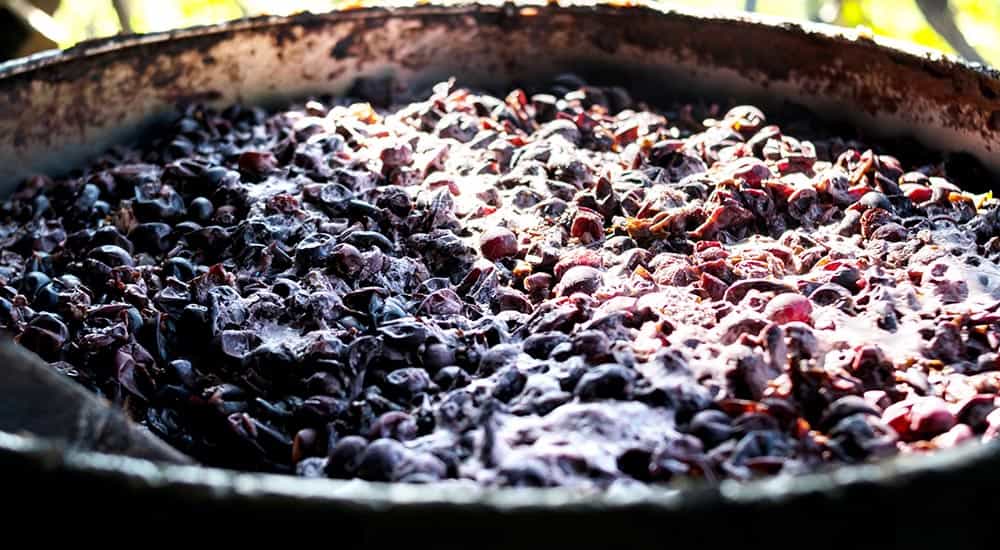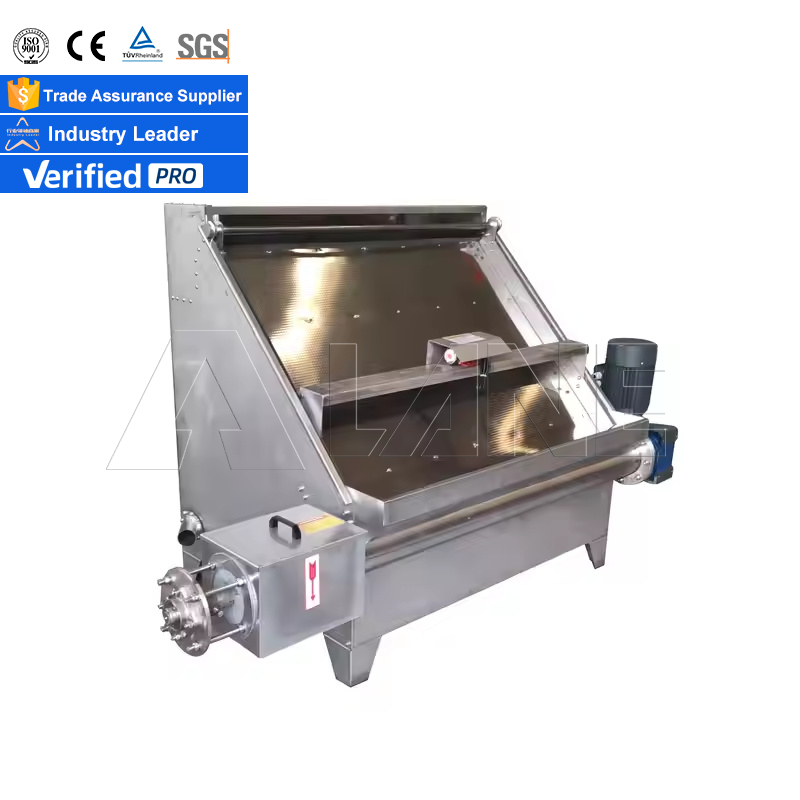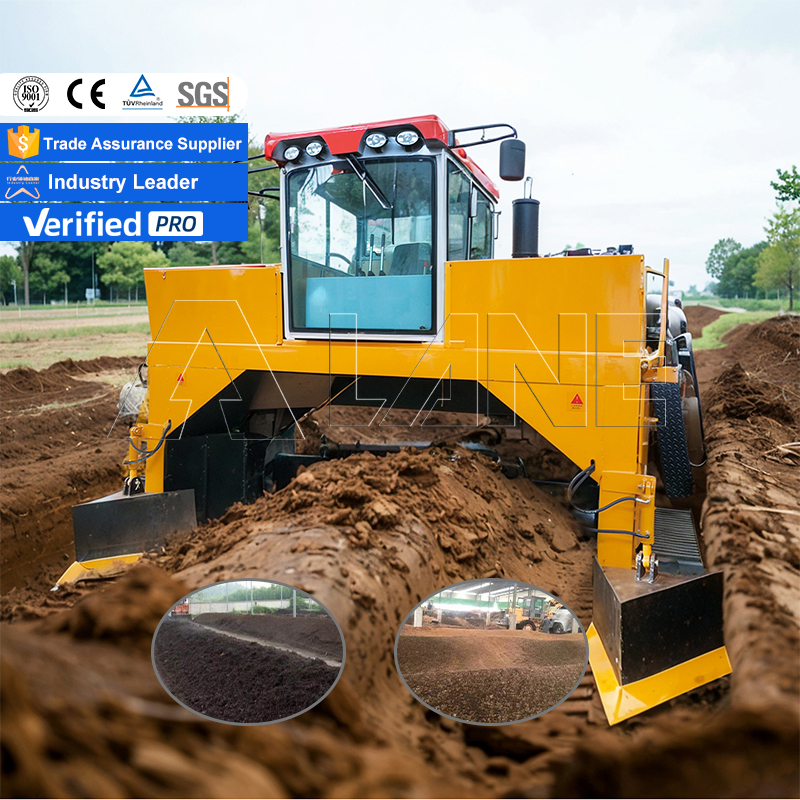In 2016, the global wine production was 259 million liters. The total vineyard area in the world is 7.9 million hectares, of which Europe accounts for about 4.5 million hectares. European countries play an important role in global wine production. Italy, France and Spain are the main producers. As part of the sustainable development of winery production, winery waste management becomes a concern for vineyards and wineries.
The wine industry generates a lot of waste during the making season (August to October or September to November). After each pressing and fermentation, wineries are left with skins, pulp, seeds, stems, leaves and other winemaking residues.

The main solid by-products and residues generated include:
● Grape pomace (63%)
● Lees (13%)
● Stems (12%)
● Dewatered sludge (12%)
Grape pomace consists of about 8% seeds, 10% stems, 25% skins and 57% pulp. The main wastewaters are winery wastewater and wine lees, which produce winery sludge. According to statistics, about 13 million tons of grape pomace are produced every year worldwide. Grape stems and grape pomace are the main waste products of the entire winemaking process.
Traditionally, these organic byproducts, such as wine stems and wastewater, are disposed of in landfills. At the same time, some environmental problems have also been generated. How to effectively utilize grape and winery waste is an urgent task. According to the circular economic growth model, waste needs to be recycled to increase the output value of commodities.
Grape pomace is a major waste product generated in the winemaking process. It is rich in N–P–K–Ca (2.0–0.5–2.0–2.0) and can be recycled as a soil conditioner due to its high content of organic and nutrient components. The value of grape pomace as compost/fertilizer depends on the proportion of organic matter, which can be converted into humus and have a beneficial effect on the soil.
Experts have studied the characteristics of grape stems, grape pomace, wine lees and dealcoholized wine lees. Generally speaking, these substances have an acidic pH value, low conductivity, and high organic content. Grape stems and seed coats have a high carbon-nitrogen ratio due to their lignocellulose properties.
Grape stems also contain a large amount of polyphenols, with a content of 3.8-34.9 g/kg. In addition, grape stems and seed coats are rich in tannins. Wine lees contain N, P, and K. It is reported that the average organic matter content in grape branches and leaves is 15%, containing 44.22% carbon, 0.62% nitrogen, 0.25% phosphorus, and 1.44% potassium.
It also contains magnesium, calcium, sulfur and other elements, which are essential nutrients for grape growth. Winemaking wastewater has a high content of organic waste, low nitrogen and phosphorus content, and a pH value of 3-4.
In addition to being rich in organic matter, grape and winery waste also cause environmental pollution. The efficient use of these organic wastes is in line with the concept of sustainable development. Composting the waste can not only solve the pollution problem, but also achieve the reuse of materials. In a sense, it is the recycling of materials. In addition, the composting method has low energy consumption and low cost, and is a method promoted by many Western countries.
Composting of winery waste, grape straw composting, and composting process of waste materials in the wine industry
Before composting grapes and winery waste, some pre-composting steps are required. Let us introduce these methods to you one by one.
Pretreatment of grape branches and leaves: Grape branches and leaves have a high C/N ratio and a large solid volume, so they cannot be used for composting directly. Grape branches and leaves need to be cut into particles with a diameter of 20mm, and inorganic nitrogen substances and organic matter with a high nitrogen content are added to achieve efficient composting of branches. Adding inorganic nitrogen substances such as urea can achieve rapid heating of raw materials and accelerate the degradation of organic matter.
Pretreatment of winery wastewater and sludge: These wastes should be dehydrated before composting. Generally speaking, liquid wastes can be decomposed, screened, sanded, flow-balanced, and chemically added. These are the preliminary treatments of liquid wastes. Then they are treated by sedimentation, coagulation, and flocculation.
Granular media filtration is also a necessary step in pretreatment of winery wastewater. In this way, you can get lees, stems and pomace for composting. Our company has equipment specifically designed for solid-liquid separation to help you achieve this step.

After the winery waste is treated, it can be composted.
First of all, composting design is essential. Composting can be done in the open air, exposing the raw materials to the air. As for the compost pile, it can be adjusted according to different requirements. This is related to the working height of the compost turner.

Secondly, the raw materials (grape stems, grape pomace or pomace, lees, sludge, seeds, etc.) are piled up. Preliminary studies have shown that the most suitable stacking ratio is 1:1 and 1:2 (grape sludge and grape stems) to obtain the best material integration and C:N ratio (the raw materials added to the pomace should have a calcium-nitrogen ratio suitable for composting (1:20 to 1:30)). During the composting process, temperature, moisture, pH, total organic carbon, total nitrogen, C/N ratio, oxygen and mixture verification should be strictly controlled. The moisture is required to be around 55%, the maximum temperature is around 65°C, and the oxygen concentration is not less than 5-10%.
Advantages of Composting Grape Straw, Pomace and Sewage Sludge
During the composting process, organic compounds can be transformed into more stable substances through a large number of microbial activities. Windrow composting of grape and winery waste can be another option for managing waste and can also be recycled. The volume of organic waste can be reduced by 40%. In addition, waste disposal costs can be saved and the final product (decomposed winery waste) can generate income.
On the other hand, the trend of organic farming and organic food is on the rise. Fertilizer is food for plants.
Therefore, organic fertilizers are essential for organic and sustainable farming. In fact, vineyards can effectively use grape pomace/pomace compost. That is, the resulting compost can be used as fertilizer for grape growth. Compost can also be used for the growth of other plants.
In short, windrow composting is a viable method for treating residues from the wine industry.
Compost is considered a complete fertilizer because of the variety of organic matter it contains. It is a good organic fertilizer for plant growth at present. In the future, it will be a more popular fertilizer due to its economic benefits and environmental protection.
Composted grape and winery waste can be used as organic fertilizer and recycled in agricultural soils. Grape pomace/pomace compost can be used in soil for a variety of reasons, such as providing nutrients for plant growth, increasing soil organic matter, modifying soil structure and mitigating soil erosion.
For more details, please feel free to contact us.
Henan Lane Heavy Industry Machinery Technology Co., Ltd.
Email: sales2@lanesvc.com
Contact number: +86 15515885328
Whatsapp: +86 15515885328